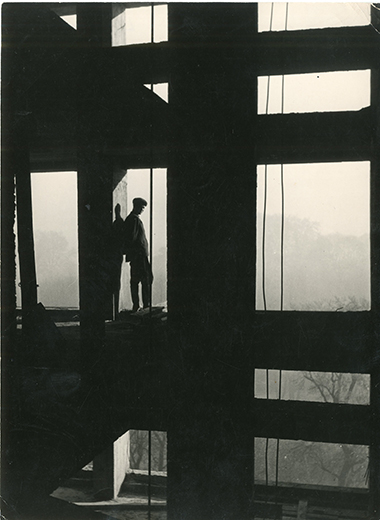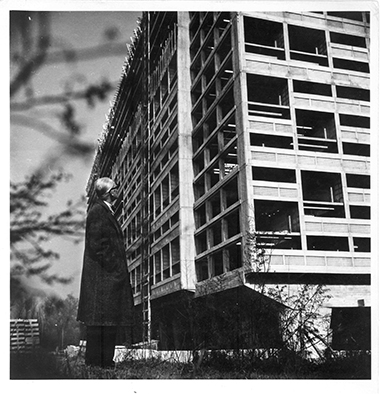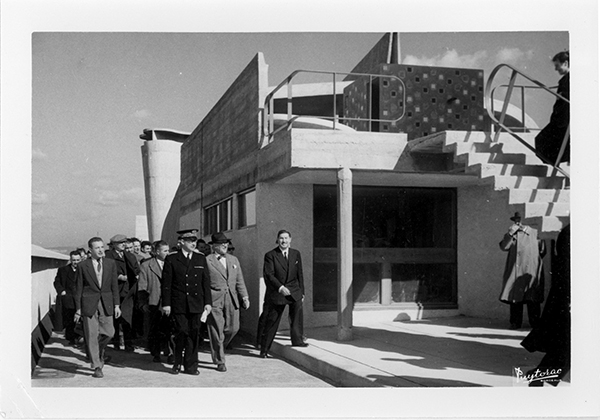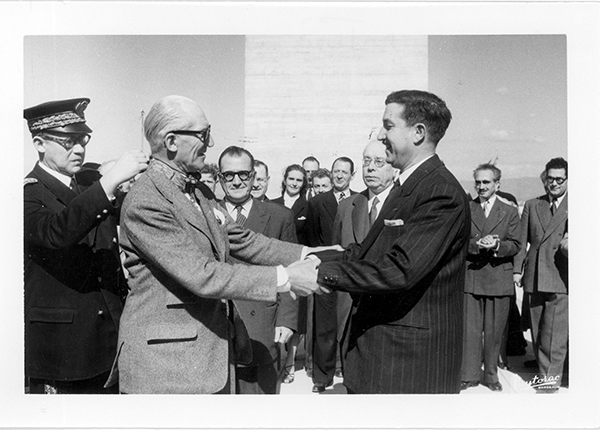

The Unité d’Habitation de Marseille turns 70 ans !
The story of the commission and the project
On November 30, 1945, Le Corbusier was commissioned by the Ministry of Reconstruction and Urban Planning to design “un Immeuble Sans Affectation Individuelle à Marseille”.
Le Corbusier had been thinking about collective housing since the 1920s. In Marseille, he proposed “the solution of the ‘vertical garden city’ to replace the ‘horizontal garden city’, the masterpiece of the last century and the cause of the ‘denaturalization’ of the urban phenomenon”.
On October 14, 1947, the foundation stone for the Unité d’Habitation de Marseille was laid! For almost five years, the Atelier du 35 rue de Sèvres and ATBAT worked on the 1st full-scale housing unit, an architectural and modern revolution. The apartments, bathed in light from sunrise to sunset, offer exceptional comfort for their time: thermal and acoustic insulation (double-glazing and brise-soleil), open-plan kitchens… Like a vertical village, life is organized from the interior streets to the roof terrace, offering a variety of services (nursery school, gymnasium, open-air theater, shops, milk delivery…).
The inauguration of the Unité d'Habitation took place 70 years ago!
He declared: “I have the honor, the joy and the pride of handing over to you the Unité d’habitation de grandeur conforme, the first manifestation today of a modern form of Habitat, commissioned by the State, and free from all regulation […]. Built without regulations, against disastrous regulations, made for people, made on a human scale. Made with the robustness of modern techniques and the new splendor of raw concrete. Made, finally, to put the sensational resources of the time at the service of the home – that fundamental cell of society.”
70 years on, the Cité radieuse still looks out over the Mediterranean and continues to embody the project Le Corbusier set himself in 1947: “to provide in silence, solitude and facing the sun, space and greenery, a home that is the perfect receptacle for a family”, but also “to erect in nature […] facing the sun, a masterly architectural work; made of rigor, grandeur, nobility, smile and elegance”.
Classified as a historic monument (in 1986) and included on the World Heritage List (in 2016), the unit remains a place of life and exchange that residents, old and new, make their own on a daily basis.
Cultural life is omnipresent, from the interior streets to the roof terrace (which has welcomed a number of artists: @Daniel Buren, Xavier Veilhan, @IAM, SCH…). The Hôtel Le Corbusier, the restaurant Le ventre de l’architecte, the MaMo, the Librairie Rupture & Imbernon, the Maison Mirbel… are just some of the places that contribute to the Cité Radieuse’s dynamism!


